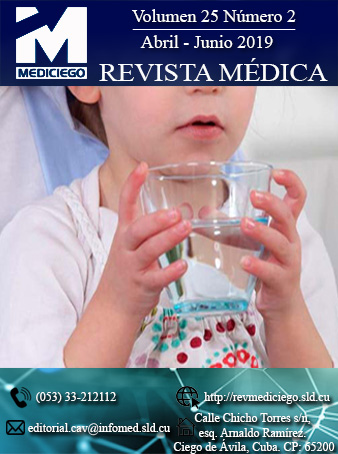Surgical treatment of pubertal gynecomastia with infiltrative local anesthesia
Abstract
Introduction: gynecomastia is defined as the benign growth of the mammary gland of man, a secondary process to glandular proliferation. The aesthetic alterations that it causes have a negative impact on those who suffer from it. After two years, pharmacological treatment is not usually effective and surgery is recommended as the only option.
Objective: to present the case of a teenager diagnosed with pubertal gynecomastia and surgically treated. Despite being this frequent disease, few patients accept surgical treatment.
Case presentation: male patient of 16 years of age, white, with a history of overweight since childhood and no disease associated with his current condition. He reported that approximately from 11 or 12 years old he noticed an increase in the nipple volume, associated with pain of moderate intensity at the pressure and palpation. He underwent laboratory tests to rule out a possible hormonal disorder and a diagnostic ultrasound of both breasts. Surgery was recommended as a viable option (simple liposuction, combined with bilateral adenectomy). This patient was the first pediatric case surgically treated at the institution using infiltrative local anesthesia.
Conclusions: when spontaneous regression to the normal state does not occur, the only treatment option is surgical intervention, which few patients accept. In this case, the affected youth and his family gave their consent for the operation, which gave the expected results from the aesthetic point of viewDownloads
Published
How to Cite
Issue
Section
License
Copyright (c) 2021 Evelio José Ramírez Lara, Edwin Mamani Choque, Ivonne Méndez Ortega

This work is licensed under a Creative Commons Attribution-NonCommercial 4.0 International License.
Those authors who have publications with this journal accept the following terms of the License CC Attribution-NonCommercial 4.0 International (CC BY-NC 4.0):
You are free to:
- Share — copy and redistribute the material in any medium or format for any purpose, even commercially.
- Adapt — remix, transform, and build upon the material for any purpose, even commercially.
The licensor cannot revoke these freedoms as long as you follow the license terms.
Under the following terms:
- Attribution — You must give appropriate credit , provide a link to the license, and indicate if changes were made . You may do so in any reasonable manner, but not in any way that suggests the licensor endorses you or your use
- No additional restrictions — You may not apply legal terms or technological measures that legally restrict others from doing anything the license permits.
The journal is not responsible for the opinions and concepts expressed in the works, which are the exclusive responsibility of the authors. The Editor, with the assistance of the Editorial Committee, reserves the right to suggest or request advisable or necessary modifications. Original scientific works are accepted for publication, as are the results of research of interest that have not been published or sent to another journal for the same purpose.
The mention of trademarks of specific equipment, instruments or materials is for identification purposes, and there is no promotional commitment in relation to them, neither by the authors nor by the editor.






















